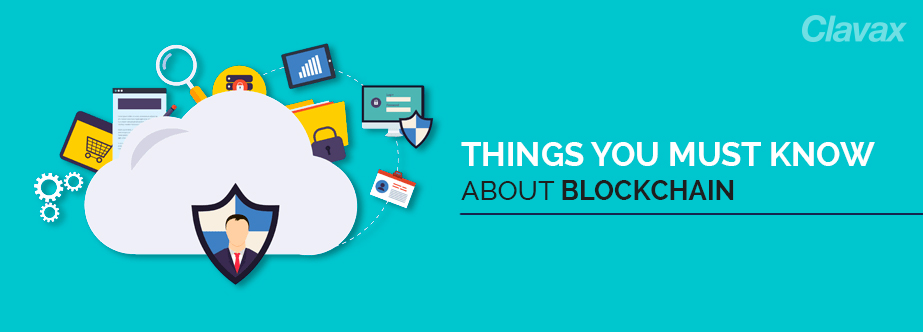Things You Must Know About Blockchain
There is no denial in the fact that blockchain is one of the indigenous inventions that came after the introduction of Internet. It is the hottest topic that is frequently being discussed nowadays but not many are aware of what Blockchain really is. While most of the people believe that it is a technology behind Bitcoin, the potential use of Blockchain extend far beyond just digital currencies. Let’s find out what is Blockchain and why the world is getting crazy about this?
Understanding Blockchain
To make a transaction, people prefer to use a trusted medium such as a bank. However, with blockchain, there is no need for a third party, as it allows suppliers and consumers to connect directly using cryptography to keep the exchanges safe and secure. Blockchain can be defined as a decentralized database technology of digital transactions that anyone on the same network can see. The distributed network is basically a chain of computers where all the systems need to approve the exchange before it is verified and recorded. It continuously maintains a growing list of records called blocks where each block has a timestamp and a connection to a previous block.
How does it Work?
A blockchain is the data structure that represents a record of a transaction or a financial ledger entry, where each transaction is digitally signed to ensure that no one tampers with it. The blockchain technology works in such a way that whenever a new transaction or any changes in the existing transaction takes place, all the other nodes present within the blockchain needs to evaluate and verify it. Only after the verification of the history of an individual block, the new transaction is accepted & the new block is added to the chain of transactions. If most of the nodes do not agree, the transaction will be denied & won’t be added to the chain. Based on this distributed consensus model, Blockchain functions as a distributed ledger that can verify whether the transactions are valid or not without the need of some central or unifying authority.
One of the best examples of Blockchain is Bitcoin, where Blockchain records the details of all the transaction and avoids the same Bitcoin being used more than once. The process somewhat resembles the land title with every transaction starting from the original owner to the current ownership. E.g. If Amy wants to send money to Bob, the transaction will be represented online as a ‘block’. This block will be broadcasted to all the systems in the network, once they approve that the transaction is valid, this block will be added to the chain that stores a transparent record of transactions. Hence, the money moves from Amy to Bob through Blockchain methodology.
Who Should use Blockchain?
Though Blockchain is mainly used for keeping the record of Bitcoin transactions for tracking cryptocurrencies, it can be used in recording loans, stock transfers, healthcare related data, contracts & voting for elections. This technology can work for almost all type of transaction involving value like money, property or goods. From collecting taxes to allowing migrants to send money where banking facility is not available, uses of Blockchain are countless.
How Secure is it?
The best part of Blockchain is that it reduces the chance of fraud since each transaction is highly secured. For every single transaction, a new block with signature is created and sent to all the client nodes in the network for validation. The transaction is approved only when the nodes validate it and match with blockchain history. Using Blockchain is considered secure as only the entire network, not any central authority is responsible for approving any transaction.
[Read more- Top 10 Blockchain App Development Companies in US]
In 2016, as per the survey conducted by the World Economic Forum’s Global Agenda Council, only a small proportion of global GDP (around 0.025%) is held in the blockchain. However, it is expected to increase tremendously in coming years, as many banking and tech firms believe that blockchain is the trending technology to cut costs and achieve safer transactions.
